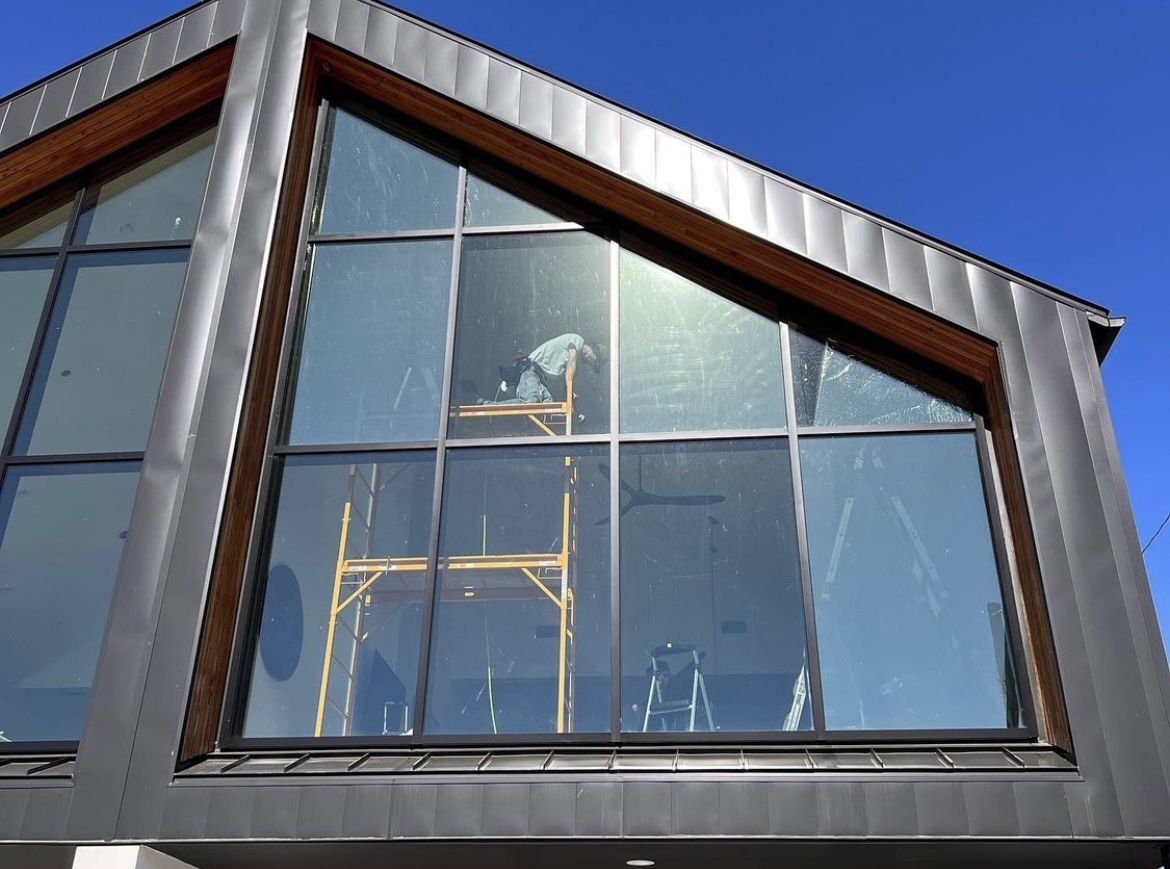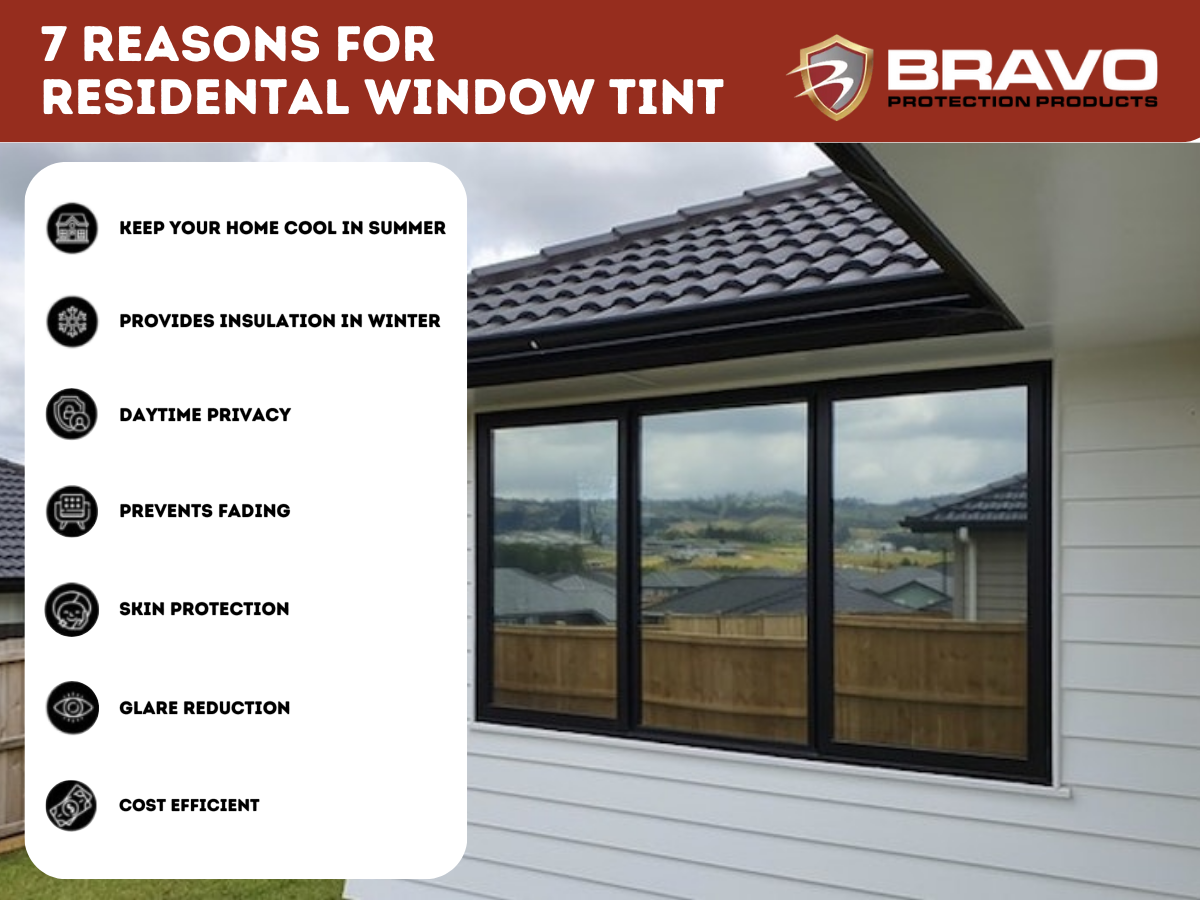Top Advantages of Installing Residential Window Tint for Your Home
Top Advantages of Installing Residential Window Tint for Your Home
Blog Article
How Residential Home Window Tinting Improves Your Home's Power Efficiency
Residential home window tinting presents a compelling solution for house owners looking for to boost energy efficiency within their living areas. By applying specialized films to windows, it successfully lowers warmth transfer, thereby stabilizing indoor temperatures and lessening the requirement for too much home heating or air conditioning.
Recognizing Home Window Tinting
Recognizing home window tinting is crucial for homeowners seeking to boost both convenience and power performance in their space. Residential Window Tint. Home window tinting entails the application of a slim film to the interior or exterior surface of glass home windows. This movie can dramatically regulate the quantity of sunlight and heat that enters a home, thus affecting interior climate conditions
There are various sorts of home window tinting movies offered, each with unique buildings. As an example, colored films absorb solar power, while reflective movies deflect it away from the glass surface area. Ceramic films offer an equilibrium of presence and warm being rejected, making them a preferred choice among property owners. The effectiveness of home window tinting is frequently determined by its Visible Light Transmission (VLT) percentage, which suggests how much light can pass via the film.
Benefits of Power Efficiency
Home window tinting not just enhances aesthetics yet additionally plays a substantial role in improving power effectiveness within household spaces. By reducing warm transfer through home windows, tinted films produce a much more secure indoor environment, which can lead to substantial reductions in power intake for heating & cooling. This power efficiency equates right into lower utility costs, providing property owners with significant long-term cost savings.

In addition, window tinting enhances the convenience of living spaces. By minimizing glow and blocking unsafe UV rays, colored windows develop a more pleasant setting, which can result in improved wellness for occupants. The defense against UV rays additionally assists maintain furniture and floor covering from fading, contributing to the longevity of family items.
Exactly How Tinting Works
Tinting movies run with a mix of sophisticated products and innovations made to manage the quantity of solar power getting in a home. Mainly made up of polyester, these films commonly incorporate ceramic or metal particles that take in and mirror heat. This double capability enables them to dramatically minimize the infiltration of ultraviolet (UV) rays and infrared radiation while permitting visible light to travel through.
The effectiveness of window tinting is gauged by its solar warmth gain coefficient (SHGC), which suggests just how much solar power is transferred via the home window. Lower SHGC values find are better as they denote higher warmth rejection. Furthermore, home window colors can feature a variety of shades, permitting house owners to tailor their aesthetic choices while improving energy efficiency.
In addition, these movies act as a barrier, stopping warmth loss throughout cooler months by mirroring indoor warmth back right into the living space. This thermal insulation effect complements the air conditioning advantages gained during warmer months, adding to a balanced indoor climate year-round. By managing solar power efficiently, domestic window tinting not only improves comfort but likewise plays a crucial function in minimizing energy usage and lowering utility bills.
Picking the Right Color

There are different kinds of home window films offered, consisting of colored, metalized, and ceramic. Dyed films are economical yet may have limited longevity. Metalized films provide much better warmth rejection however can disrupt digital signals. Ceramic movies provide exceptional heat control without jeopardizing visibility and are highly sturdy, making them a prominent selection.
Noticeable light transmission (VLT) is an additional vital element, as it indicates the amount of all-natural light that can pass with the colored glass. House owners need to select a color with a check that VLT that complements their lighting preferences while still giving adequate glow decrease.
In addition, analyzing the solar warmth gain coefficient (SHGC) can aid figure out how well a tint can block warm from sunshine. A lower SHGC indicates much better heat control, ultimately enhancing power performance.
Installation and Maintenance Tips
Appropriate setup and maintenance are crucial components in making the most of the advantages of domestic home window tinting. Professionals likewise make use of specialized strategies and tools, which can improve the durability and efficiency of the color.
Adhering to installation, upkeep is vital to lengthen the life of the home window movie. It is advised to wait at the very least thirty day before cleaning the colored windows to enable the sticky to heal totally. When cleaning, utilize a soft fabric and a mild, ammonia-free cleaner to avoid damaging the movie. Stay clear of abrasive products that could damage the surface area.
Furthermore, routine examinations are valuable. Look for any peeling or bubbling, which could indicate improper installment or put on with time - Residential Window Tint. Addressing these issues promptly can prevent further damages and keep power effectiveness. By adhering to these installation and upkeep pointers, home owners can guarantee their home window tinting remains to give substantial energy cost savings and comfort for several years ahead.
Conclusion
To conclude, household window tinting acts as a reliable service for boosting power efficiency within homes. By lowering warm transfer and blocking unsafe UV rays, window movies contribute to lower power consumption and enhanced indoor convenience. The selection of proper tinting materials, in addition to proper installment and maintenance, additionally optimizes these benefits. Eventually, window tinting represents a lasting investment that not just lowers utility costs but additionally promotes a comfortable living setting throughout the year.
Window tinting entails the application of a slim film to the interior or exterior surface of glass home windows. By lowering heat transfer through windows, colored movies develop a more stable indoor environment, which can lead to substantial decreases in power consumption for heating and cooling.The efficiency of home window tinting is gauged by its solar warmth gain coefficient (SHGC), which shows how much solar energy is transmitted through the window. click site By managing solar energy successfully, property home window tinting not just boosts convenience yet also plays an important role in minimizing energy consumption and decreasing utility expenses.
By decreasing warm transfer and blocking dangerous UV rays, window movies contribute to reduce energy consumption and improved interior convenience.
Report this page